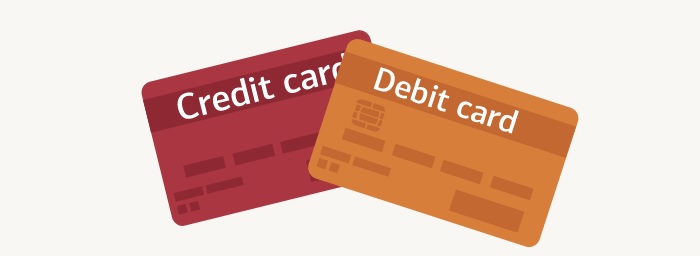What is the Difference Between Credit Card & Debit Card?
Cashless payments have quickly become the bedrock of the global economy due to their convenience, security, and universal acceptability. According to a recent study, it was found that the valuation of digital payments across India for FY 2017-2020 was pegged at more than 20,000 billion INR. Among the various modes of cashless payment, credit and debit cards remain the most popular. This is evident from the fact that by April 2020, the number of credit card and debit card users stood at 57.4 million and 829.4 million respectively. However, many new users often do not clearly understand the differences between credit and debit cards. Read on to know more.
What are credit cards?
A credit card is a type of plastic currency issued by banks to their customers that allows them to buy on credit. You can use a credit card to purchase without having to pay for it upfront. You will be billed for your expenditures at a later date, most likely every month.
Each credit card comes with a predefined limit that caps the maximum amount you can spend on any commodity. Once you reach that amount, you are disallowed from using the credit card until you clear the standing transactions.
What are debit cards?
A debit card is issued to you whenever you open a new account with a bank. You can use a debit card at an ATM to take out hard cash. However, the card won’t be of use if you do not have sufficient funds in your bank account. All purchases made using debit cards are instantly reflected in your bank account.
Difference between credit card and debit card
As explained, credit and debit cards differ fundamentally in that a credit card allows you to borrow money whereas with a debit card you only spend what you have in your account. In addition to this difference, credit and debit cards differ in the following ways:
- Maximum spending limit
Credit cards come with a limit on how much you can spend on specific items. This spending limit varies according to your credit score, the company issuing the card, and so on.
However, no such limit exists for debit cards although your bank may cap the maximum amount you can withdraw/spend in a single use.
2. Interest
Interest may be levied on your purchases made through credit cards if you do not clear outstanding bills in time.
No such provision exists for debit cards. You can use it to directly draw funds from your account.
3. Perks
Credit card users can access various benefits such as cashback, discounts, gift vouchers, etc. For debit card users, such offers are usually very limited, and even then restricted to holders of special debit cards.
4. Eligibility
If you wish to obtain a credit card, bank authorities will do a thorough check of your purchasing history, active income, credit score, etc.
On the other hand, you are provided a debit card whenever you open a new account with any bank.
Conclusion
Credit and debit cards are two important pillars of the global shift towards a cashless economy. While credit card functions on a buy now, pay later mechanism, the main principle behind debit cards is that you pay as you go. However, given the global push towards a cashless economy, it is now easy and convenient to apply for both credit and debit cards. You can compare the features and benefits of a number of credit and debit cards in one go on Finserv MARKETS and apply for a credit card or debit card that best suits your needs.


